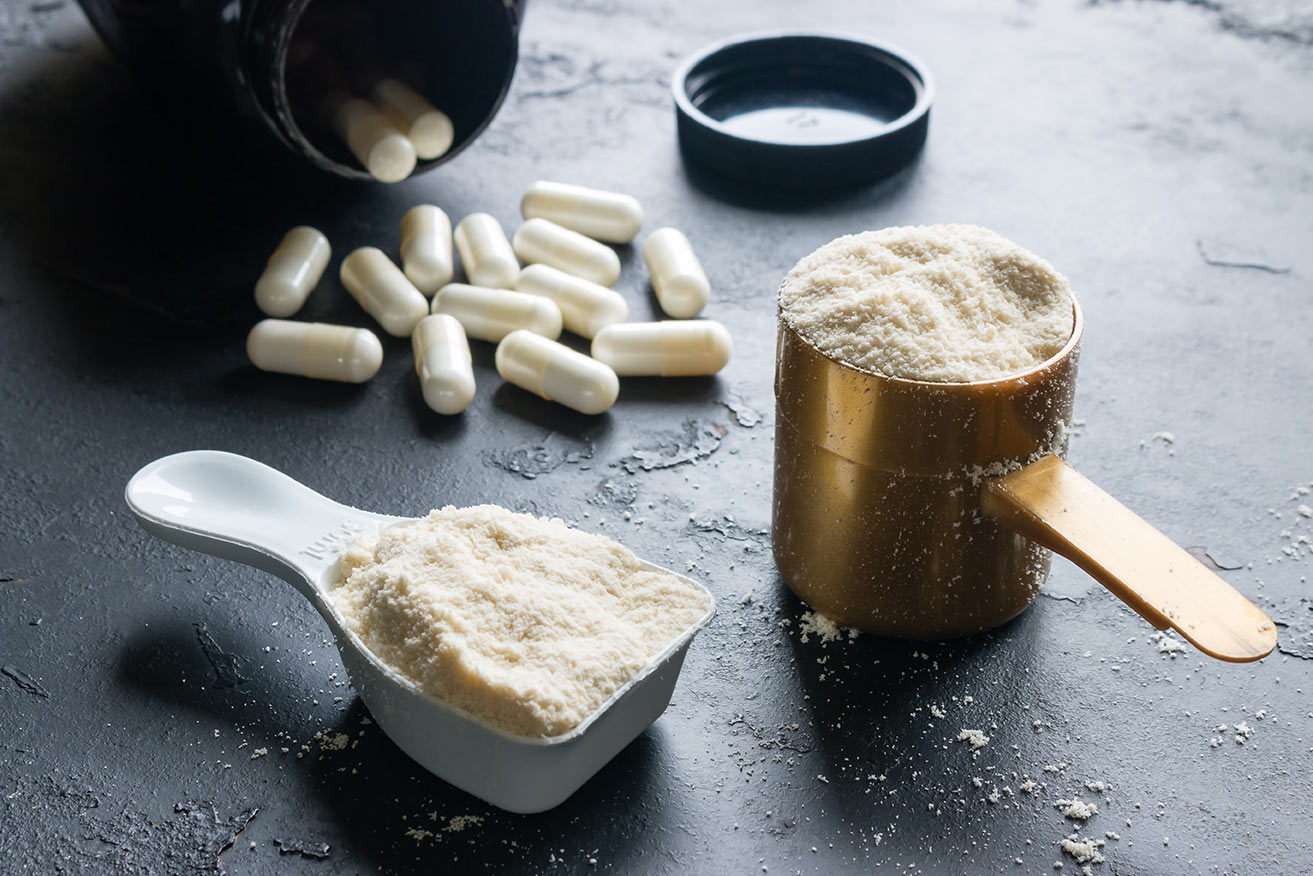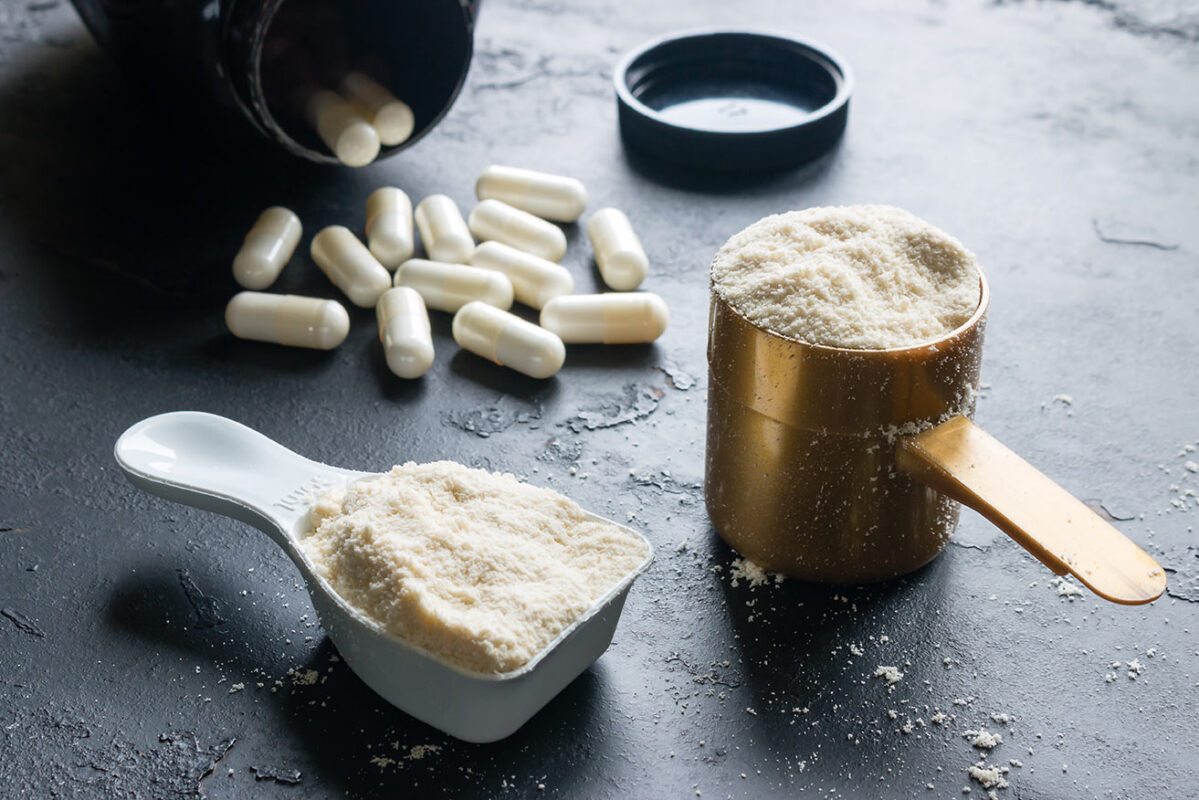 Have you ever found yourself confused by all the conflicting messages about protein in the online world of health and fitness? If so, you’ve come to the right place! Let us break the evidence down for you and provide you with some practical, bite-size tips that you can start implementing today!
Have you ever found yourself confused by all the conflicting messages about protein in the online world of health and fitness? If so, you’ve come to the right place! Let us break the evidence down for you and provide you with some practical, bite-size tips that you can start implementing today!
Put simply, protein is one of the three essential macronutrients in our diet, that is mostly known for its role in the building and repairing of our muscle tissue. What we don’t always recognise is protein’s vital role in the regulation of our body’s cells, tissues and organs and its structural role in our body’s skin, bones, enzymes, hormones, antibodies and neurotransmitters.
Proteins are made up of a variety of amino acids, aka ‘the building blocks of protein’. There are 20 amino acids in total, 9 of which the body does not synthesise. These are known as essential amino acids (EAA’s). We can now classify protein into either ‘complete protein’ – a protein containing all 9 EAA’s, mostly found in animal products and soy – and ‘incomplete protein’ – a protein lacking at least 1 EAA, mostly found in plant-based sources of protein.
Getting back to business, our muscles need these amino acids to repair the micro damage that results from our tough exercise sessions (hello, sore muscles!) So, how much protein do we need to eat, as a heathy, exercising individual? It is important to realise that our recommendations will vary as we are all unique, however generally speaking:
“For building muscle mass and for maintaining muscle mass through a positive muscle protein balance, an overall daily protein intake in the range of 1.4–2.0 g protein/kg body weight/day (g/kg/d) is sufficient for most exercising individuals”(1)
The amount of protein in one DOSE is also important to consider, to maximise our muscle growth potential. This is especially important for those wanting to build lean mass. As a rule of thumb, a sufficient protein dose – around 20-40g depending on your individual recommendations – should ideally be consumed every 3-4 hours, across the day to achieve optimal muscle protein synthesis (MPS). It is important to note that more is not always better! Our body has a threshold of how much protein it can absorb at one time and excess will be excreted via our urine.
What about protein supplements?
Before considering the introduction of protein supplements (such as protein powders) in your diet, I would recommend first working with a trusted health professional to identify your individual protein requirements. From here, you can work out whether you are eating enough naturally through whole food sources, or if you may need further assistance. Often, individuals don’t need to use protein at all and can simply focus on eating more protein-rich meals and snacks to obtain the amount of protein their body requires for optimal health.
We have to realise that supplements are supplements, and should be used as such. A food first approach is always recommended as a first-line strategy and if you find that:
– You struggle to reach the amount of protein that you require,
– You have very high protein requirements (like our athletes!)
– Or you simply struggle to eat enough protein at a particular meal after trying to increase your protein intake with food…
A protein powder might be a good fit for you. A good example here is if you are consistently not reaching sufficient protein at breakfast, perhaps adding half a scoop of protein to your morning milk, yogurt or smoothie, provides enough of a protein ‘boost’ to optimise the dose of protein that your body needs.
“While it is possible for physically active individuals to obtain their daily protein requirements through the consumption of whole foods, supplementation is a practical way of ensuring intake of adequate protein quality and quantity, while minimizing caloric intake, particularly for athletes who typically complete high volumes of training.”(1)
Okay, so you think you might be interested in trialling a protein powder? Where do you start? What do you look for? What’s a good option? With SO many products on the market, it can be an overwhelming task! Below are my top 8 considerations for selecting a protein powder that works best for you.
1. Opt for a High Biological Value (HBV) protein aka a complete protein, where possible. This means 2 things: the protein contains all 9 essential amino acids our body needs to build/repair muscle AND the amino acids are in similar quantities to what our bodies need. HBV protein powders are usually whey, soy or egg based.
2. Protein dose: Ensure your powder includes enough protein per serve: a minimum of 20-40g per serve is required for optimal muscle protein synthesis (MPS). Note that if you are combining your protein powder with food-based protein such as milk in a smoothie, you can use less protein powder to achieve the same amount of protein intake!
3. Check the leucine content: Leucine is the amino acid responsible for ‘switching on’ MPS. We want to aim for at least 2-3g of leucine per serve of protein. This dose of leucine found in most HBV protein but not so much in plant-based options. Opting for a plant-based protein that has been blended using more than 1 source of protein is important to obtain sufficient leucine (e.g. rice + pea protein). Be sure to check the label to ensure you have sufficient leucine in your protein powder.
4. Whey or Casein? Whey and casein are common proteins derived from milk. But what is the difference between the two?
• Whey protein is a ‘rapidly digested’ protein meaning that we digest it quickly. It is also a HBV protein and mostly high in leucine, meaning whey protein is the most effective in stimulating MPS. This rapidly digested protein taken in excess is also likely to be flushed out, as the body has a threshold of how much it can absorb at any one time. This faster-digested protein is ideal for pre- and post-workout nutrition.
• Casein is more commonly found in ‘food’-based protein and known as ‘slow-digested’ protein. As it takes longer to digest, it can assist in curbing hunger and is utilised best as part of meals and snacks. It has been found that consuming 30-40g of casein protein before bed actually increases overnight MPS and metabolic rate without influencing lipolysis.(1)
5. Check the carbohydrate and fat content: If you are aiming for fat loss, opt for a protein powder that is low in these other macronutrients – after all, we are using protein powder for its protein content, right? Whey isolate proteins are usually very low in carbohydrates and fats. If you are wanting to build muscle, gain weight, or have extremely high requirements and struggle to eat your recommended amount of calories in a day, you may wish to opt for a protein higher in carbohydrate or fat to get more bang for your buck!
6. Beware of ‘extras’ such as caffeine and other stimulants or additives. For the general exercising population, the less ingredients on the label, the better. Evidence for ingredients such as ‘fat burning’ stimulants are not conclusive and aren’t recommended when choosing a protein powder. Furthermore, many cheaper proteins have a lot of caking agents, emulsifiers, creamers etc. added for improved texture. Like other packaged foods, less is more! But of course, you need to take into consideration your taste preferences and budget as well!
7. Opt for natural sweeteners: Buying a ‘sweetened’ protein? Most of us do, to make it nicer to drink or eat! Selecting a protein powder with a natural, non-nutritive sweetener like stevia to improve the taste without increasing the energy density.
8. Consider the safety of your supplement: With such a saturated market and products now more readily available from all around the world, it is not uncommon to see banned or harmful supplements circulating in Australia. Things to consider regarding the safety of your supplement: does your supplement contain any banned substances (especially if you are competing professionally!); ensure your product is safe and free from cross-contamination; and ensure your supplement has been tested and proved effective. An easy way to ensure the safety of your protein powder is to choose a product with the tick of approval from 3rd party banned substance tested company such as HASTA, NSF Certified or Informed Sport. If approved, they will have their logo displayed on the packaging. Furthermore, Aussie brands are a great place to start as we do have quite rigorous requirements in comparison to other countries, plus it is always great to support local businesses!
Final thoughts…
All in all, for the general, exercising population who requires a protein powder, I would recommend a Whey Protein Isolate (WPI) or alternatively, a Soy Protein for the plant-based, population due to their HBV make-up. Remember to read/check the label for the above points to decide whether the protein powder is a good choice for you. You may wish to consider purchasing a “sample pack” if available, so you know you will enjoy the flavour of the supplement before you buy it!
Please note, it is recommended that you consult with a dietitian or your sport’s dietitian if you are unsure of your individual requirements or are unsure whether a protein powder is suitable for you. This will assist you to better optimise your nutrition around your training and fitness goals and improve your overall health.
Jordan Kain APD MND EXSPSC
Dietitian & Exercise Scientist
REFERENCES
1. https://jissn.biomedcentral.com/articles/10.1186/s12970-017-0177-8
2. https://www.sportsdietitians.com.au/factsheets/supplements/protein-supplementation/

